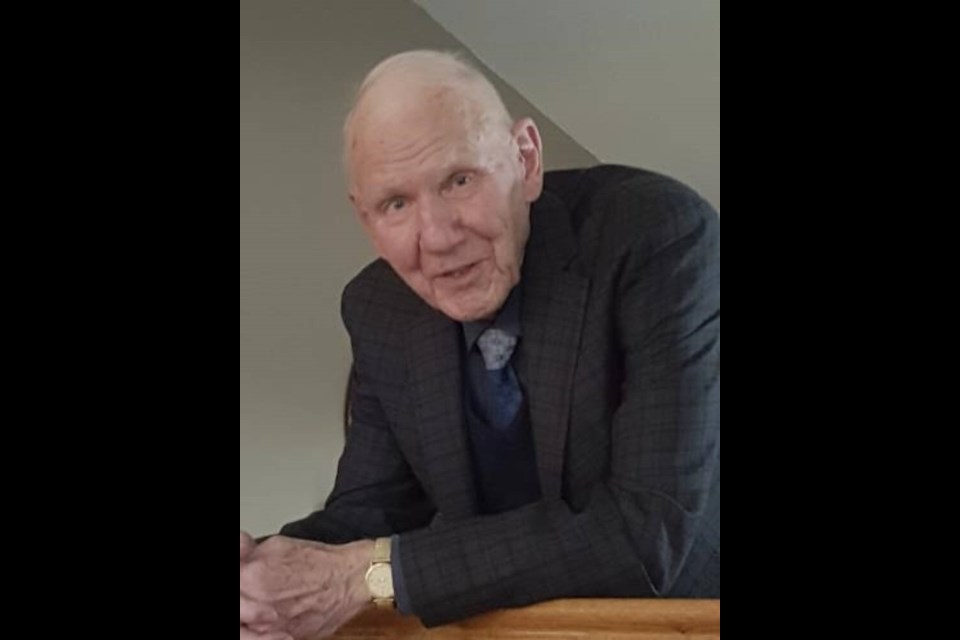A commentary by a former deputy minister of environment, lands and parks and of water, land and air protection.
Recently the Times 91原创 of a great British Columbian, Bob Ahrens, someone who deserves to be acclaimed and honoured for his role as an outstanding leader of the generation that laid the foundations for the provincial parks organization and all that it stood for and achieved in the years after the Second World War.
I was one of those privileged to have worked for him, albeit toward the end of his parks career. I was as a very junior staff member in the Parks Branch of 1973, where he served as director before moving on to become a deputy minister. I witnessed what this man stood for and how stalwart, creative, dedicated, professional and insightful he was.
He was a visionary leader who inspired a generation of park staff.
At that time Dave Barrett’s NDP was in a hurry to reshape the parks system; with Bob at the helm and deputy minister Lloyd Brooks, Recreation and Conservation Minister Jack Radford working with Lands, Forests and Water Resources Minister Bob Williams, a substantial number of exceptional parks were added to the system.
That the Parks Branch was able to move fast to respond to government’s imperatives had a lot to do with Ahrens’ early leadership of the planning and reconnaissance team and their dedicated and highly professional approach.
However, to understand his real gifts and contributions we need to look back to the days when it was far more difficult to lead the Parks Branch.
In the 1950s and 1960s, this province was still driven by a business-first ethos and highly consumptive resource economy; there was not a lot of interest on the part of elected leaders in, let alone knowledge about, conservation and ecology.
A lot of private interests had been granted in the old parks such as Strathcona, Wells Gray and Tweedsmuir. Park boundaries seemed to change with bewildering speed to accommodate resource interests.
The infant Parks Branch had to be skillfully managed by astute individuals who knew when to fight, when to bend a little and when to withdraw to fight on different grounds, in order to protect the essence of what were some superlative parks and recreation places.
Amazingly along the way they achieved things which placed foundations in place for the future while protecting the essence of the then present day. They built the road and lakeside recreation system we know and love today.
They persuaded government to pass a Provincial Park Act in the 1960s that is still to this day the framework for the current act.
It defined what parks are and established a differentiated system that spanned from local community parks in rural B.C., included some lands where some highly constrained resource use might occur, introduced nature conservancies to protect large wilderness areas and of course set the basis for the Class A Provincial Parks that we know today.
In so doing, it set clear direction of how to ensure that there was no more industrial resource extraction in these lands and it set a simple but effective legal test for ministers were they tempted to allow uses that did not ensure the conservation of these spectacular recreation lands.
The act also ensured that the Parks Branch was truly the master of the lands under its jurisdiction.
It is a tribute to the drafters of the legislation that even today, more than 50 years later, the basic architecture of this legislation still applies.
Ahrens was one of those architects of the future who was very much grounded in the present reality. To have done this when very few people understood let alone supported the principles of conservation that we are only today coming to fully appreciate was a remarkable achievement.
This all required many people, a team, and all teams need a leader. Bob was that leader, a visionary, principled but pragmatic centre around whom others operated.
His reach and influence, was not simply internal to government. He forged critical alliances in civil society in an age when that rarely happened.
An inspirational communicator, he influenced parks leaders throughout Canada and his talks at conferences and universities determined the career choices of many people in our nation.
It has been said that the most important sign of leadership is in the people whom one selects to carry the torch when you are gone. He presided over a time of great change in the organisation as a new generation began to replace the “old guard.”
It was not an easy time and there were many personality clashes between a number of strong-willed and highly competitive individuals.
Ahens did not seem particularly comfortable dealing with this turmoil, however, when he was promoted, he recruited as his replacement in the role of B.C. Parks Director a young Tom Lee, who could do what Ahrens was not able to do and so became a legendary leader himself, first for B.C. and then nationally as the head of Parks Canada.
Bob outlived most of his generation, never intruding but always gracious in continuing to listen to and advise anyone who cared to share a challenge and ask for his help.
For my generation, he was an inspiration. For generations to come, his contributions will continue to inspire awe.
He was always active and loved being outdoors; walking or tending his fruit trees in Victoria is how I will remember him best.



